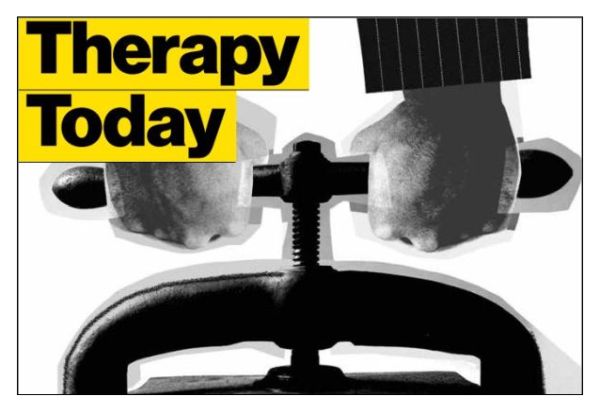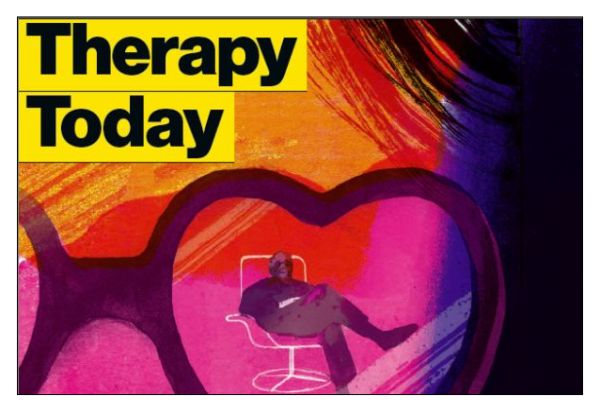People who feel depressed will often spend money in an attempt to cheer themselves up, so getting trapped in a vicious circle in which their attempts to deal with their depression perpetuate what may be one of the factors causing their depression – debt.
Yet, argues the Money and Mental Health Policy Institute in a new report,1 NHS mental health services rarely ask patients about their financial circumstances, and people in debt are often too ashamed to admit to it – so one problem that could be relatively easily resolved by referral to a specialist debt adviser is, in many cases, ignored.
Money and Mental Health wants IAPT services – increasingly the first port of call for people living in England seeking talking therapy for anxiety and depression – to include a specific ‘debt question’ in their initial assessments; record if clients are in debt in the national Minimum Data Set, and, in time, add debt advice to the treatments they offer. Currently, according to its survey of over 400 people who have received NHS talking therapy, 54 per cent did not discuss their financial situation with their psychological wellbeing practitioner (PWP) or counsellor, and only six per cent of those in financial difficulties were referred to a specialist debt advice service.
Money and Mental Health Director Polly Mackenzie says: ‘Financial problems are one of the main drags on people’s recovery. Debt advice exists – there’s never enough of it, of course, but it is relatively well funded and debt is something we can fix. With a trained debt adviser on your side, you can get so many debt problems solved, especially if you have mental health problems.’
Money and Mental Health has calculated that, for an IAPT client with depression who is in debt, accessing specialist advice could raise their chances of recovery from the current 22 per cent to 48 per cent, and from 38 per cent to 50 per cent for someone with anxiety and in debt. Overall, IAPT’s recovery rates could be lifted to 53 per cent for people with depression and 52 per cent for anxiety, taking them over the national 50 per cent recovery target.
Money and Mental Health is now looking for an IAPT service willing to trial its proposals. Mackenzie argues: ‘There is a stigma associated with being in financial difficulties. Very few people feel comfortable mentioning it to their therapist. We aren’t saying that therapists should be debt advisors; it’s a completely different set of skills. What we want is for therapists to ask the question, and for the need for debt advice to be researched. It’s a question of triaging people out to get help because, if they don’t get help, it will have an effect on their recovery rate.’
Filling the poverty gap
The Money and Mental Health report comes hot on the heels of the 2015/16 IAPT annual report, which for the first time analysed the numbers of people entering treatment, finishing a course of treatment and showing recovery against the national Index of Multiple Deprivation. The analysis showed that IAPT services in areas of high deprivation received higher numbers of referrals (some 200,500 were referred in the 10 per cent most deprived areas, compared with 92,000 in the least deprived), but just 35 per cent moved to recovery, compared with 55 per cent in the least deprived – a very clear gap.
Sarah Swindley is Chief Executive of Lancashire Women’s Centres, a third-sector health and wellbeing organisation that supports women across the county, offering safe, therapeutic and supportive space for women, with welfare and debt advice, mental wellbeing training and employment support, and counselling, which it provides as part of the county’s IAPT services. She very much welcomes Money and Mental Health’s campaign to raise awareness of the importance of financial difficulties in clients’ lives and put debt on the IAPT agenda.
‘IAPT services already collect data on employment and social adjustment, and assessments will sometimes pick up on issues like debt, but it’s not specifically asked. Debt is an escalating issue in this region since the welfare reforms and the introduction of benefit sanctions. It’s often a factor in suicides. There’s a massive interlinking here.’ But, she says, ‘it’s not necessarily a mental health intervention that is going to help – often what’s needed is practical help.
‘In our assessments, we look at the immediate stressors that bring the client to us. If, as is very often, they are debt or financial problems, we will work with those first. If someone has the bailiffs knocking at the door, they need this addressing first if they are to be able to carve out a space in their lives to address their needs therapeutically,’ Swindley says.
‘In the longer term, you would hope therapy would build their resilience so people can address these issues themselves. And most can very effectively do that, but we get women coming in with carrier bags full of unopened bills, and when you are in a quagmire of debt, it’s not an IAPT practitioner you need to see at that point, it’s a debt advisor, who can contact creditors and help you feel more in control. The role of the IAPT therapist then is to look at how they got in that situation in the first place and what will help them stop that happening again.’
Unlike most NHS IAPT services, the centres have specialist welfare and debt advisors on the premises. This, Swindley says, is essential: people in financial and emotional crisis, who are struggling to keep their home and family together, will also struggle to organise themselves to get to appointments; people who are depressed and anxious similarly struggle to motivate themselves to seek help: ‘The one-stop integrated service for all your health and social care needs is a recognised model, but I would argue for the third sector being integrated as well,’ she argues.
Richard Garland, Manager of Touchstone IAPT in Leeds, one of the four partner organisations providing IAPT services across Leeds city, is more cautious about adding another task to his service’s ever-growing remit. Touchstone IAPT is specifically charged with improving access to psychological therapies for people from black and minority ethnic (BME) groups, including refugees and asylum seekers. It works mainly in the inner city, in community venues, and in the most deprived wards.
Garland has the challenge of increasing access to some of the groups that are the hardest to reach and to engage. He points out that many IAPT services are tied by their commissioners to tell clients they can no longer have therapy if they miss more than two appointments. By actively managing a direct referral route, Touchstone IAPT is able to be more flexible, to follow up missed appointments and ensure the door to its service stays as wide and welcoming as possible. Nevertheless, reflecting the national picture, ‘we are very good at engaging people, but our retention and completion is not nearly as good,’ he admits. ‘Obviously, the industrial scale on which most IAPT services work means they will struggle to do that – and to be fair it’s been a struggle for me to find the money to provide the administration support so the therapist can retain involvement with the client.’
He is concerned that, if he were to add debt to list of issues to be included in the initial assessment, it would be one more item that keeps his frontline staff from delivering the treatment they are there to provide. ‘It’s a double-edged sword, something that is challenging us now. Do we stick to assessing people for what our service can provide, or do we assess all of their mental health and related socio-economic needs, conduct a full holistic assessment, and then refer on appropriately? The more we do that, the more we become the single point of access for all mental health and related services and the less we are assessing clients for the service we can provide.
‘Just under half the Leeds IAPT workforce are PWPs and half their time is spent screening and doing assessments, which pulls them away from group work and guided self-help, the work they have been trained to deliver and the work they became therapists to deliver.’
He, like Swindley, argues that counselling needs to be part of a package of help if IAPT is to work effectively with financial difficulties. ‘IAPT can’t be the answer to everything. What is needed is much more of a public health approach. Therapy services are not, and have never been, able to deal with these issues themselves. Some small organisations continue to provide that kind of holistic service, but it is increasingly difficult for them to survive financially these days.’
What are the barriers?
Jaime Delgadillo is a lecturer in clinical psychology at the University of Sheffield and also works as a cognitive behavioural therapist with Leeds IAPT. He has been researching how poverty affects IAPT recovery rates.2 His research supports IAPT’s own findings: it is clear average recovery rates are much lower in areas of high deprivation than they are in more affluent areas. But, he stresses, this is not inevitable: some services in deprived areas are getting better results than you might expect: ‘This is a message of hope. Simply living in a deprived area does not doom you to poor outcomes.’
What interests him is why this difference exists: what are the factors that are determining these poorer outcomes and, thence, how might they be mitigated?
He has three suggestions, which will be the focus of his next research. The first is that a lot of the people referred to IAPT in poorer areas don’t in fact have a mental health problem; they are simply experiencing a perfectly natural reaction to the conditions of poverty and desperation in which they are living. ‘We’re talking about distress, not disorder,’ he argues.
Second, people living in difficult socio-economic circumstances face much greater obstacles to accessing treatment: they may not be able to afford the bus fare to the clinic; they may not be able to pay for childcare so they can attend appointments regularly. Or the therapist may use behavioural activation to try to get them to re-engage with activities they have previously enjoyed. But if you can’t afford to go out for a drink with friends or go to the cinema, then the therapy is going to be ineffective, he points out.
And third, the person’s socio-economic circumstances may limit the effectiveness of therapy. A woman living in a very deprived area with a lot of crime and anti-social behaviour comes for help with very high levels of anxiety about her own health and her children’s safety: ‘There is little I can do to challenge her worries because they are justified,’ Delgadillo points out. ‘Indeed, it might be functional for her to worry about these things because being alert to the possible dangers will help her keep her children safe and well.’
He argues that commissioners, policy-makers and healthcare funders need to be more realistic about what therapy services can achieve in areas of high deprivation: ‘If they don’t, some services may stop being so open to people who live in dire circumstances, and that would be gross inequality.’ Similarly, he argues, practitioners should have realistic expectations of clients who may, because of their circumstances, be unable to do what they are asked to do to assist their recovery.
Person-centred counsellor Andy Rogers questions whether counselling should be part of the healthcare system at all. He thinks therapy is being sucked back into a medicalised view of distress that is at odds with the more holistic psychosocial understanding of distress as having socio-economic and cultural causes. ‘From the person-centred perspective, the therapist is being pushed back into the position of the expert technician who mends people and makes them healthy again, rather than the facilitator of what the client brings. I can see why counsellors are keen for therapy to be part of the NHS and free to all who need it, but we have paid a high price, in my view. I see counselling as a uniquely human, compassionate response to distress that offers people a space where they are acknowledged and validated as a unique person; where they are listened to deeply, and given an opportunity to explore and create meaning. Part of this is exploring the social context of their distress. Counselling is not a treatment for disorders.
‘When clients say to me, “I am depressed,” or, “My GP says I have an anxiety disorder,” my first question is, “What does that mean for you?” Very rarely is it so straightforward. People who have had contact with mental health services tell me, “I never really talked about these things” – very obvious things about how their history impacts on who they are and what their distress means in the context of their lives.’
Earlier this year, a survey by the British Psychological Society and the New Savoy Partnership reported rising levels of work-related stress and depression among practitioners in NHS psychological services, including IAPT. Seventy per cent of the 1,100 practitioners surveyed said they felt stressed by their work often or most of the time; 46 per cent said they felt depressed, and 49 per cent ‘felt like a failure’.
To clinical psychologist and psychotherapist Jay Watts, these findings reflect a sense of hopelessness among IAPT practitioners, who are facing a tide of problems about which they feel they can do little or nothing: ‘Those in training now, especially in the manualised approaches, are being given unrealistic expectations of what they can achieve. They are being told it is all about the client’s mindset, and if that can be changed then everything is possible. We have to recognise our limits as psychotherapists and psychologists,’ she says.
But, she points out, they can use their professional status to support clients: ‘If writing a letter makes a client’s appeal against a benefit sanction go through a bit quicker, or we can help them get a Citizen’s Advice Bureau appointment or a crisis loan, then that is what we should do. We have to be flexible about what we consider to be the boundaries of counselling.’ And sometimes naming the anger is really important, she says. ‘Be activists – don’t just tick off the debt question on the assessment form – do something with that anger!’
Julian Edge is a counsellor working with a voluntary organisation in Manchester. When he started out in counselling, he made two rules: if he was no longer able to feel empathy for his clients in the counselling room, or at the end of the working day to close the door and walk away from what his clients brought, he would stop practising. ‘But when you close the door and walk out into a world where one politician’s cuts in welfare spending are another person’s threat of destitution, it becomes harder and harder to go back into the room without taking that with you,’ he says.
He describes a client signed off by his GP and consultant as unfit for work because of severe long-term physical injuries. ‘He still had to go for an assessment by a private sector organisation – one that had been financially incentivised to get him off benefits. Through his internalised working-class pride, when he was asked in the assessment questionnaire, “Can you walk 100 yards?” he ticked “Yes”. So he didn’t get enough points and his benefits were cut, and he was having to fill out job applications for work he couldn’t possibly do – and you are in the room with him, holding your own response to what has been done to him – that is hard,’ Edge says. He sees the essence of counselling as a secular version of the ‘Serenity Prayer’: ‘Helping clients to find the serenity to accept the things they cannot change, the courage to change the things they can change, and their own form of wisdom to know the difference.’
‘My role is to leave outside the room my own anger at what has been done to clients, but at the same time acknowledge with them that something unacceptable has been done to them, to let them know they are not alone, they are not mentally ill and they are entitled to their anger. It’s about validating, normalising their anger without making it mine. My anger finds its expression outside the room.’
Catherine Jackson is editor of Therapy Today
More from Therapy Today

FGM – exposing a hidden child abuse
Free article: Catherine Jackson talks to counsellors about their work with survivors of female genital mutilation. Therapy Today, November 2016

A crisis of containment
Open article: Penny Campling highlights the role of therapists in helping contain anxiety in institutions, particularly in an NHS beset by constant change and uncertainty. Therapy Today, October 2016

Transference love and harm
Open article: Dawn Devereux explores the powerful phenomenon of idealising transference and the harm it can do to clients. Therapy Today, September 2016
References
1. Acton R. The missing link. Money and Mental Health Policy Institute. November, 2016. www.moneyandmentalhealth.org/the-missing-link
2. Delgadillo J, Saria M, Ali S, Gilbody S. On poverty, politics and psychology: the socioeconomic gradient of mental healthcare utilisation and outcomes. British Journal of Psychiatry 2016; 209(5): 429–430. bjp.rcpsych.org/content/209/5/429
